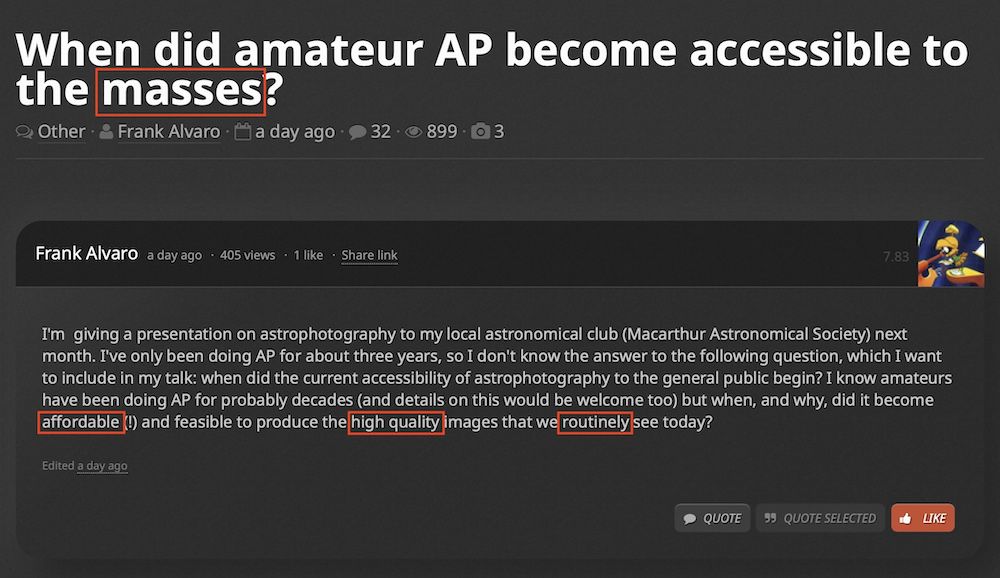
It's not possible to pinpoint the dates before you can quantitatively define terms like masses, affordable, high quality, routinely, etc. For example, what's affordable? Many regular people like you and me can afford amateur class equipments 40 years ago. What's high quality images that we routinely see today? Using today's whatever standard, only 10% of the photo 10 years ago can quality, no matter what that standard is. And this fact won't change 10 years later because the standard then will be higher. With the constantly shifting standard, there will never be an answer to the original question because the answer would keep changing.
Despite the very non-scientific, very poorly framed question posted by the OP, I think the advents of the following things clearly contributed to today's popularity of astrophotography:
1. Internet. This significantly speeds up information exchange, which attracts more people, and helps more people to learn quicker.
2. DSLRs that are capable for astrophotography. Many already mentioned this. The first DSLR that's astro-capable, in my memory, is Fujifilm Finepix S2 pro, which appeared in 2002. Then followed by Canon CMOS generation cameras. DeepSkyStacker appeared in roughly the same period. Such free stacking program helped, but I am not sure if we can consider them the driving force.
3. Cheap astro cameras, scopes, and mounts from China. This probably started by QHY from about 2010, and then ZWO, iOptron, Sharpstar/ASKAR etc into 2020.
4. Imaging automation program that integrated with mini/micro PC and equipments? I put a question mark here like DeepSkyStacker. They help to keep people in this hobby and reduce frustration. But I am not sure if they are the driving force of the expansion of astrophotography.
Among the above four, I would say #1 is the most important one. Without it, not just astrophotography, many things today would have been very different.
My 2 cents.
Cheers,
Wei-Hao



